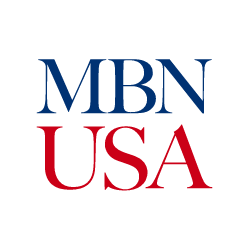WASHINGTON – Administrator Isabella Casillas Guzman, head of the U.S. Small Business Administration (SBA) and the voice for America’s 33 million small businesses in President Biden’s Cabinet, announced that the Agency reached nearly $43 billion in funding to small businesses, providing more than 62,000 traditional loans through its 7(a), 504, and Microloan lending partners and over 1,200 investments through SBA licensed Small Business Investment Companies (SBICs) for Fiscal Year (FY) 2022.
“While still managing billions in COVID relief, the SBA also delivered record lending in FY22, helping tens of thousands of entrepreneurs across our nation get the needed funding to start, grow, and build resilient businesses,” said SBA Administrator Guzman. “Our work at the SBA, under the Biden-Harris Administration, addresses entrenched inequities in capital markets and throughout our economy. We continue to make progress expanding our network of SBA lenders and removing barriers to capital for small businesses – the foundation of a competitive global economy.”
Despite ongoing, structural challenges that exist for small business owners when seeking capital, the SBA’s efforts in helping them pursue their American dream showed signs of progress. Notably, the SBA’s low-interest 504 loan program grew in volume to $9.2 billion, a record level of lending for the 504 program. In addition, the 7(a) program saw an increase in small-dollar loans, evidence of the SBA’s prioritization of startups and businesses hampered by gaps in credit markets.
While the general pace of U.S. private funds capital raising and deployment slowed in 2022, SBA committed nearly $4 billion to Small Business Investment Companies (SBIC) licensees who then, in turn, deployed nearly twice that amount in financing to U.S. small businesses and startups. Underpinning this growth was a focus on deploying capital to groups that have previously been underrepresented in the investment ecosystem. In 2022, the SBA increased the number of financings to women-owned, minority-owned, and veteran-owned small businesses by 29 percent compared to the previous year, and 62 percent of the private funds that received an SBIC license in 2022 were managed by general partnerships inclusive of women, minority, or veteran investment principals.
“The SBA continues to make headway in helping startups and small businesses access much-needed capital, but much more work remains to be done,” said Patrick Kelley, Associate Administrator for the SBA’s Office of Capital Access. “Our flexible, low-interest 504 loan program grew in loan volume by 12 percent, and the SBA team is already at work for FY23 to support job and entrepreneurial growth across the country.”
Bailey DeVries, Associate Administrator for the SBA’s Office of Investment and Innovation added, “FY22 set SBIC program record highs of $7.9 billion in small business financings which, in turn, created and sustained ~130,000 U.S. jobs, and the SBIC portfolio grew to approximately $38 billion in public and private capital. With the SBA’s proposed regulatory reforms, we’ll build on the exciting momentum by diversifying and expanding this important public-private investment program and collaborating with industry to stimulate the flow of capital to small businesses in underserved communities and undercapitalized industries critical to our national security.”
“Ninety-five percent of the world’s consumers live outside the U.S.,” noted Gabriel Esparza, Associate Administrator for the SBA’s Office of International Trade. “Yet, the challenges U.S. small business exporters face in expanding to foreign markets include longer sales cycles and heightened country and currency risk. Our export financing volume grew by over 28 percent (vs. FY’21) and we remain committed to closing the trade finance gap with an increased focus on export working capital solutions.”
By the Numbers: Overall Funding and Impact
In the execution of commitments made under Administrator Guzman to address persistent gaps that remain for certain communities in accessing capital, the SBA continues to innovate and retool its programs, while deepening outreach efforts to better reach business owners across the nation, particularly from traditionally underserved communities. FY22 regular business lending and investment programs data of note includes:
$25.7 billion in 7(a) loans: Returning to pre-pandemic levels, nearly 47,700 7(a) loans worth $25.7 billion were provided to small businesses. In total, 68 percent of the loan volume (32,152 loans) were small dollar loans of $350,000 or less, with the program originating more loans under $150,000 in FY22 than in both FY21 and FY20. Lenders also reported that minority business owners received over $8.3 billion in 7(a) loans and women business owners received nearly $7.3 billion in 7(a) loans in FY22.
$9.2 billion in 504 loans: Working with authorized Certified Development Companies (CDCs), the SBA’s 504 program delivered 9,254 fixed-rate loans for equipment and real estate worth more than $9.2 billion to small businesses, the highest lending level in the program’s history. According to reporting by CDCs, the program provided $2.5 billion in lending to minority business owners and almost $900 million to women-owned businesses, while the number of rural small businesses served increased by nearly 15 percent.
$82.6 million in microloan funding: Up from FY21, $82.6 million in Microloan funding went to 5,055 small businesses, with 76 percent of loans going to underserved communities, including Hispanic-owned and Black-owned small businesses, per lender reporting.
$7.9 billion in funding through private debt and equity funds licensed as SBICs: In an increase over FY21, financing was provided to 1,217 small businesses and startups, of which 26 percent were women-owned, minority-owned, and veteran-owned small businesses or located in underserved geographic areas.
$584.4 million in export-related trade finance: Reversing a four-year downward trend, and despite a strengthening U.S. dollar environment, the SBA underwrote $275.3M in Export Express and International Trade term loans, while simultaneously expanding its Export Working Capital portfolio to $309.1M.
Closing the Capital Access Gap by Ensuring Small Businesses Have Products to Meet Today’s Needs
The SBA’s existing traditional loan programs serve an important role in credit markets for small businesses, particularly entrepreneurs with collateral and demonstrated revenue who are denied a commercial loan or market terms or those who lack established relationships with traditional lenders. These products also remain extremely attractive to those small businesses still navigating various economic challenges along their entrepreneurial journey.
Under Administrator Guzman’s leadership, the SBA has committed to expanding access to its core lending programs and better meeting the needs of entrepreneurs to achieve more successful outcomes in job creation, U.S. exports and GDP.
Reducing costs for those who need relief: To make its 7(a) program more cost effective for borrowers and lenders, the SBA reduced 7(a) fees to zero in FY23 for borrowers and participating lenders on loans up to and including $500,000.
Addressing systemic gaps in access to capital for the smallest, underserved businesses: Administrator Guzman authorized the expansion of the Community Advantage program to increase the number of mission-based lenders, and further provided revised guidance that streamlines eligibility and underwriting requirements to simplify the delivery of small-dollar loans through the program. Changes included providing increasing the threshold for required collateral to only loans above $50,000, to further support small-dollar loans.
Decreasing market gaps in FY23: As a top priority in FY23, the SBA is proposing regulatory reforms to its affiliation and other rules to offer the same streamlining it created under Community Advantage across the 7(a) program. It has also proposed a rule change to increase the number of permanent Specialized Small Business Lending Companies (SBLCs) in the program, helping to identify and close holes in the market that far too many under-resourced small businesses fall through. Additionally, acknowledging that small business exporters face unique challenges in selling abroad, the SBA will also focus on expanding and tailoring working capital solutions in FY23.
Positioning Our Innovative Small Businesses and Startups for Success in the Early Stages, Across Critical Industries, By Transforming Investment Strategies and Networks
Diversifying and expanding the reach of private investment in FY23: An additional top priority in FY23, proposed reforms are planned to go into effect to address structural aspects of the SBA’s public-private investment partnership, the SBIC program, which has historically limited the flow of licensed SBIC capital to small businesses and startups not adequately financed by private markets alone. The goal is to increase new fund managers, diversify financing strategies, and private funds focused on equity-oriented investments in the SBIC program so small businesses and startups, especially those in underserved communities and geographies, capital-intensive industries, and undercapitalized technologies critical to national security can more readily gain access to private capital.
For more information about SBA’s loan programs, financial assistance, and other services, visit www.sba.gov.
About the U.S. Small Business Administration
The U.S. Small Business Administration makes the American dream of business ownership a reality. As the only go-to resource and voice for small businesses backed by the strength of the federal government, the SBA empowers entrepreneurs and small business owners with the resources and support they need to start, grow or expand their businesses, or recover from a declared disaster. It delivers services through an extensive network of SBA field offices and partnerships with public and private organizations. To learn more, visit www.sba.gov.





